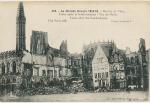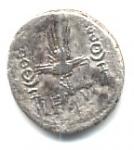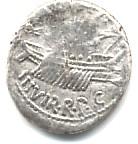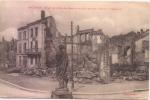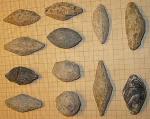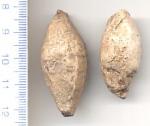-
Posts
388 -
Joined
-
Last visited
Content Type
Profiles
Forums
Blogs
Gallery
Events
Store
Everything posted by Eduardo
-
Thanks Hendrik and Octave. It must be some kind of a big mortar that was used to destroy the Big Bethas. Hendrik, you are right there are no rails under the equipment and it looks as a caterpilar. The inscription "Bertha's destroyer" was just wishfull thinking, or this equipment as used purposely and with constant results for that? Eduardo
-
I am posting now a postcard which I doubted if I should include it into my collection. For one thing because it is dated before the war, 22. XI. 1913, and because nothing about the war can be seen. Nevertheless if heads or state and other political actors of the war are included, the Reichstag "Plenar Saal" I believe fits properly. Even if it was taken a few months before the war. This card, issued by "Kunstverlag J. Goldiner, Berlin." was send by a Peruvian tourist Mr. Jos? Barrios to his brother Jorge L. Barrios in Lima, Peru.
-
Although I see that in this section the subject is small arms, I could not find another place in the forum where to ask about this First World War photograph. It has been sugested that it is a Big Bertha with its barrel blown off, and that explanations sound possible, but the french inscription translated to something like: French piece to destroy Berta, or so I think it does. The equipment, or what is left of it, is on a railroad wagon as the Big Berthas were. I will thank any explanation. Eduardo
-
Another view of the Halls of Ypres. Very similar to the previous one. This one issued by: Imp. R. Pruvost. 159 r. Montmartre. Paris.
-
And here a view of the Halles of Ypres after the bombs made by "Photo Express" and printed by Imp. Baudiniere, Nanterre.
-
Today I will post three views of Belgium. The first one of Ethe, in the south, and the other two of the Halles of Ypres after its destruction. The "Panorama" after the battle of Ethe, was printed by "Verlag W Capus, Luxemburg-Bahnhof, after a photografh made by N.chumacher. numbered: Mr.49.
-
Thanks Kevin. Yes I understand it refers to the "Big Bertha" cannons which were monted in railroad wagons. What gets me is the french inscription "Piece francaise qui detruisit les Bertha". I will post this card in the weapons section to find out if it is a Big Bertha with its barrel blown off or something else. Eduardo
-
The last card I will post tonight is a view that I find awesome. The ruins of the church square at Loos-en Ghelle with a broken wagon that is in itself a representation of the desolation of war. The card was printed by "Visa, Paris".
-
Two views of the destruction at Coucy-le-Chateau issued in Paris by the same printer as the previous one. The first one shows the ruins of the tower blown by the "boches" in their retreat on March 1917. and the second one what was left of the market place.
-
This card was printed and issued in Paris. by Phototipie Baubibt.....? as the next two. The picture was made at Margival and belongs to the Battle of Chemin des Dames. I had never seen a machine like this one. It sais: French piece that destroys the "Bertha". Maybe someone can explain more.
-
Hello, I have some new postcards to add. The first one is one printed by G.D & D., London under the name of: "The Star Series" Although posted on December 27, 1908, this full body picture of General John D.P. French, 1sr Earl of Ypres wearing a beautifull uniform and all his decorations is a very special photograph even if it not in a very good condition.
-
I have always been an admirer of General John J. Pershing. One chapter of his life probably not mentioned often is that he came to Per? in 1924 representing the President of the United States for the ceremonies held for the Centenial of the battle of Ayacucho. The last battle of South American independence. After the ceremonies he was ask by president Coolidge to overview a plebisite that was going to be held in the Peru-Chile border. In any case, I wanted to inform who ever might be interested that I have found some photographs of the arrival of Grl. Pershing and his participation in some of the ceremonies. During the big parade he was the General in command of the international troops. What an honor for us. Unfortunatelly the scans I have are heavy but can send them to anyone interested diretly to their Emails. Eduardo
-
To all interested in military history and Roman coins. I have just found this 10 years old web site that is fantastic. Not only deals with Roman coins related to military history: Legions, battles, warriors, but even has a section on the bricks made by the specialized personel traaveling with the legions and weapons. I have not gone through all the site but wanted to share this "discovery" with the friends in the GMIC. http://www.romancoins.info/Content.html Eduardo
-
Hello Dan, I guess you refer to this Vespasian Denary. The example in my collection is not of the best but you can get the idea. As you say, the Roman coins, as so many of the items in our collections, encase so much history: military, political, artistic and you mention it. I have a special passion for Roman coins. If you want to see some more pieces of the Flavian Dinasty have a look here: http://www.grifomultimedia.it/adg/monrom/flavia.htm# Eduardo
-
Hello to all, Eric is right, any cleaning of coins is a serious matter, specially when dealing with base metal. As Dan mentions, patinas are desirable. It is such a theme that in my decades collecting Roman coins I still prefer not to manipulate them. I rather leave that job to profesionals. Dan, to scan the coins you normally have to play with the ilumination. There are so many Roman coins dealing with the military history of the empire and before the Empire. Here I just post a denary of the Imperatorial period (between the Republic and the Empire or Civil Wars Period) This coins was issued by Marc Antony (43-28 BC) and there is one for each legion. The coin here presented is of the 5th Legion as can be seen under the standarts and eagle LEG V. The other side presents a sailing Galley. It is possible to have a Military History of Rome just from its coins. The weapons is just one of the subjects. Eduardo
-
Thanks Chris and Dan, As a historian I am well aware that almost anything can be a source for history. The postcards combine the photograph which is a view frozen in a given moment; the message, informative and with a fresh insight in some cases like in the last one by Emile; and all the political intentions for printing them. I will continue posting the cards as I get them. Eduardo
-
This last postcard of today is very special. Not only a dramatic card showing the destruction of the Halles of Nieuport in Belgium printed by "Imp. E Le Deley, Paris". but a delicious text written by "Emile" to his parents and dated 21 march 1916, in which he thanks them for the raisins and sausages which improve his diet. "We have dinner at very variable hours, and it is a re-heated dinner which is no great pleasure. Today I had an excelent dinner with half of the sausage.... I have kept the rest for my night guard that is from mid night to 7 hours."
-
This view of the "Passerelle" walking bridge over the Sambre in Namur, has a dificult to read preasure seal with a monogram and the word "Paris" at the left .
-
Just received this view of Baccarat with the statue of the Fall. The card was printed by " Clich? Antoine" or at least the clich? was made by Antoine. There are no other references.
-
Paul R. If you refer to the missiles here you can see some more. This group is not mine though. Only the two I posted first belong to me.
-
The lead missiles thrown with slings are to be found in many places. The two shown here are considered of Punic tradition and were found in central Spain. Some Roman misiles have inscriptions but I have not seen any. Why would these be considered of Punic tradition is something I don't know. Eduardo
-
Hello Paul, These arrows are from the so called "Macalon Tipe" because the first specimens were fround in that site in Albacete province in La Mancha. They are a double edge cast bronce points with a tube and harpoon. They appear in the Iberian peninsula arround the VII century B.C. They are considered of the Punic.-Phoenician tradition and their origen is to be found in the Eastern Mediterranean. The points are 3 to 5 cms. Long and 1 cm. Wide. Usually they have a hole in the side to place a pin that holds the point to the wood which with the hole to insert the shaft is their main characteristic and not the harpoon which might sometimes be absent. Eduardo PS. Have been looking arround for my poins all day long with no success.
-
An excelent group of Denarius, Bear. That Aelivs caesar is super. Congratulations. Eduardo
-
Paul, there are several ways to clean coins. It's a fad now to buy unclean roman coin and clean them with electrolisis or some diluted acids. I don't do it and prefer to leave it to experts but could gove you some links. If you are interested in Roman Coins have a look at my page. Eduardo http://www.grifomultimedia.it/adg/monrom/Index.htm
-
Hello Nicolas, With surprise at first and in panic later, I have not been able to find my arrow heads. I will have to make a full search because I must have misplaced them. They are brass or some other copper alloy. Will be back as soon as I find them. Have a Happy New Year. Eduardo PS. It might be interesting to have a section on ancient weapons and militaria in the G.M.I.C.






